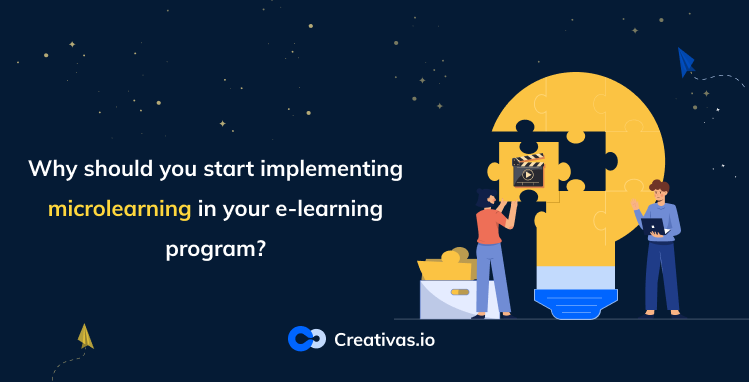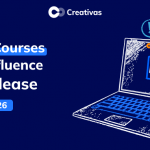
Why should you start implementing microlearning in your e-learning program?
As organizations are aware of the importance of e-learning, especially after the COVID era, they definitely came across microlearning as well. For more effective learning, organizations are opting for shorter training hours. The more concise and abbreviated it is, the less time learners spend in a course.
Microlearning is “an approach to learning that conveys information about a single, specific idea in a compact and focused manner.” (Maddox, 2018, p. 1)
Microlearning has 3 essential characteristics that need to exist each time you’re implementing this approach.
1. Short Duration:
Try to eliminate all the unnecessary details. The whole point of microlearning is to be straight to the point. Micro means extremely small. In other words, the content has to be short yet informative. This was among the findings of Lin et al on recent research done in 2020, that “user’s engagement of online learning activities plunge quickly after 7 minutes, and videos with short time duration are more popular among learners.”
2. Specific
Microlearning aims to provide training about a specific subject. The information has to be detailed yet concise, which means it has to cover one concept or topic. The learning and development team, Trainer, or Course Creator shouldn’t over-explain or repeat information differently.
3. Content Diversity
It refers that training content can be illustrated in the form of text, visuals, audio, videos, infographics, or even presentations.
Why implement microlearning? What’s in it for a business?
Let us mention at first that it’s budget-friendly. “Learning costs are estimated to drop by 50%, tripling the speed at which new content is assimilated.” (Redondo et al. 2020) This is very important for the business as the latter is always looking to minimize their costs.
Microlearning is a beneficial way of learning for both sides; learners and trainers. As for the learners, what’s more important, is the attention they pay to the course to comprehend and learn as much as possible from it. “Why Microlearning is Better for Your Learners state that microlearning makes the transfer of learning 17% more efficient and creates 50% more engagement.” (Aitchanov et al. 2018) Efficiency and engagement are what make a course successful. In addition, microlearning encourages just-in-time e-learning because learners can cover a skill gap when demanded since microlearning is about short bursts, whether it’s text, audio, or video.
Concerning the trainers, it’s easier for them to create the course since it’s short, clear and concise. It doesn’t take too much time, so the process will be rapid.
Another important thing is that microlearning has to be easily accessible. You should be using an e-learning tool that’s easy to navigate simply and functionally. This helps completion rates go up.
If you didn’t decide which LMS to use yet, take a look at our app, “Smart Courses for Confluence.”
Examples of using microlearning within your business:
Aitchanov et al. stated that microlearning is seemed to be the fastgrowing method of education. Therefore, many businesses should use this approach more often with their teams.
One of the most familiar examples is onboarding. Integrating new teams has to be effective to ensure the complete onboarding process. Welcoming newbies and providing them with the necessary information about the company and their colleagues is an easy process if you apply microlearning. A short video that explains it all will do the job. With Smart Courses for Confluence, you can embed videos and audio in your course.
Many organizations can’t afford long-term training, especially if they have many employees or a periodic busy season. They need to get teams trained as quickly as possible to be more productive for the season. Microlearning helps these organizations save time by preparing short bursts that include the needed information to train the concerned team. The trainers can prepare all the courses and keep them in a course catalog to use whenever needed. If they have different teams, course creators can restrict courses to specific groups.
If you’re a business that creates and updates features every once in a while in your products, you surely need product knowledge training for your teams. It’s helpful to rely on micro-courses. Smart Courses provides learning capsules with a variety of content types. Also, in such cases, micro-videos are very effective in microlearning that’s why it is mandatory to consider having a micro-videos tool to ease the video-making process for you.
ConfluenceLearningLMSOnboardingTraining

